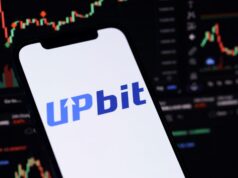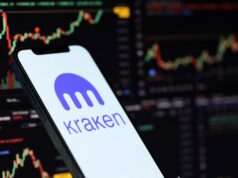Binance has launched a $400 million relief fund to help traders hit by the crypto flash crash on October 10, 2025. The exchange is expanding its earlier Binance recovery plan announced over the weekend, following the crash. The company now promises trader compensation within 96 hours through vouchers and institutional loans. However, despite the record scale of support, Binance stresses the initiative is “a goodwill measure, not an acceptance of responsibility.”
A record crash and rapid response
The October 10–11 market crash wiped out billions in leveraged positions. It also triggered the largest wave of forced liquidations since 2022. Binance’s futures and margin platforms experienced intense volatility and short service disruptions, which angered users. As a result, speculation grew about technical issues and order mismatches.
Soon afterward, the exchange unveiled its Trader Recovery Support Program, a $283 million package meant to stabilize balances and restore liquidity. Four days later, on October 15, Binance introduced the new $400 million Relief and Recovery Fund. Together, these commitments total about $728 million, not including the $45 million BNB Chain airdrop for ecosystem projects.
How the new relief fund works
The latest Binance relief fund provides $300 million in user-compensation vouchers and $100 million in low-interest crypto loans for institutional and ecosystem partners.
Eligibility is strict.
- Traders must have suffered forced liquidations between October 10 and 11 (UTC).
- Losses must exceed $50 and 30% of net assets based on an October 9 snapshot.
- Vouchers are scheduled for 96-hour payouts through Binance’s Relief Center.
Overall, Binance describes the plan as a temporary cushion designed to help traders rebuild confidence and re-enter markets after the unprecedented sell-off. Moreover, the company says the measure aims to prevent secondary liquidations and encourage traders to remain active.
Aid without liability
The relief initiative also represents a legal and reputational balancing act. In its official statement, Binance emphasized that the package “does not constitute an admission of liability.” This Binance legal disclaimer drew mixed reactions.
Supporters praised the scale and speed of assistance, calling it proof of Binance’s financial strength. Meanwhile, critics argued that disclaimers contradict user reports of platform latency, mispriced liquidation triggers, and poor communication during the crash. Consequently, debate over Binance accountability has intensified.
Because of this, legal analysts suggest that while Binance avoided acknowledging fault, it effectively set a precedent for exchange-funded insurance in crypto markets. Therefore, the case may influence how other centralized exchanges handle crisis events.
Market impact and brand perception
The Binance recovery plan and the new fund show how centralized exchanges can act as shock absorbers during extreme volatility. Together, they form the largest emergency-relief effort in crypto’s history, totaling $728 million.
In the short term, these measures may prevent partner insolvencies and reassure retail users that Binance can intervene when markets collapse. Furthermore, the initiative could stabilize market confidence after the crypto flash crash. Over time, though, it tests Binance’s brand reputation. Massive payouts may rebuild trust; however, they also highlight the platform’s central role in market-infrastructure failures.
What comes next
Traders are now watching whether Binance fulfills its 96-hour payouts and releases transparent data on eligible accounts. In addition, regulators and competitors are studying whether such voluntary relief efforts should become standard practice after extreme events.
If Binance meets its promises, the move could rebuild market confidence. Otherwise, it risks reigniting criticism that aid without accountability amounts to damage control. Nevertheless, the initiative has already forced other exchanges to consider similar contingency programs.
Conclusion — Aid ≠ Accountability
Binance’s $400 million relief fund underscores a delicate truth: even the strongest exchange cannot buy back complete trust. The company has now deployed more than $728 million in post-crash support yet continues to deny any liability for user losses.
Therefore, whether this historic Binance relief fund restores confidence, or sets a new benchmark for exchange accountability, will depend on transparency, execution, and how quickly crypto markets recover from the crypto crash aftermath. In any case, the line between goodwill and responsibility has never been thinner.
Readers’ frequently asked questions
What is Binance’s $400 million relief fund and who can apply?
Binance’s relief and recovery fund is a $400 million package designed to support traders who suffered forced liquidations during the October 10–11 crypto market crash. Eligible users must have lost at least $50 and 30% of their net assets during that period. Those who qualify receive compensation vouchers or institutional loans processed through Binance’s Relief Center.
How long will Binance take to distribute the compensation, and how can users track it?
Binance has stated that voucher payments and loan approvals will be processed within 96 hours once eligibility is verified. The exchange will post status updates in the Relief Center dashboard, where users can check verification progress and payout confirmation in real time. If claim volume spikes during rollout, Binance may prioritize high-impact liquidation cases first, so smaller claims could take longer.
Does receiving compensation mean Binance admits fault, and what are the legal implications?
No. Binance says the fund is a goodwill gesture, not an admission of fault or liability. From a legal standpoint, recipients can accept aid without waiving potential rights to future claims. Analysts note this structure protects Binance’s position while offering relief—so users can benefit now and still seek recourse later if investigations confirm technical errors or outages contributed to losses.
What Is In It For You? Action items you might want to consider
Check eligibility and file through the Relief Center
Confirm whether your account had forced liquidations on Oct 10–11 (UTC) and losses of at least $50 and 30% of net assets (snapshot Oct 9). Export account statements, liquidation emails, and order histories, then submit your claim via Binance’s Relief Center to target the 96-hour processing window.
Tighten risk controls to avoid repeat liquidations
Reduce leverage, set stricter maintenance-margin alerts, and add conditional stops. Consider position sizing rules, cross-vs-isolated margin reviews, and volatility filters around macro events. If you trade on multiple venues, align risk parameters across platforms and review auto-deleverage and hedging options.
Monitor counterparty risk and loan options
Track Binance’s execution of payouts for transparency signals. Reassess exchange concentration, withdrawal readiness, and partial self-custody for reserves. If you’re an institutional user affected by liquidity gaps, evaluate the fund’s low-interest loan terms and compare them with alternative financing before re-risking.











[…] >>> Read more: Binance relief fund: $400M plan sparks accountability debate […]